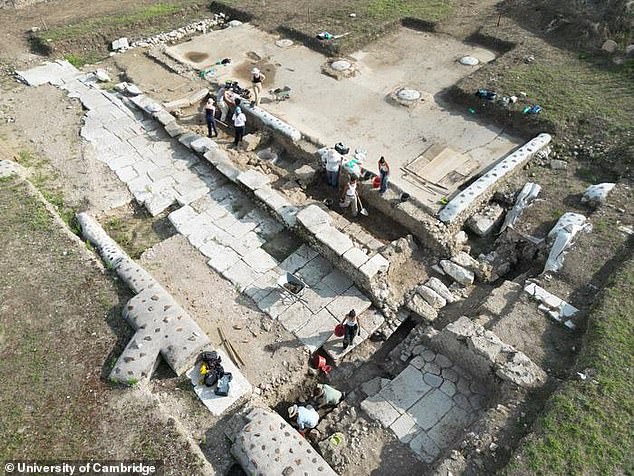
Lost City Discovery Challenges Narrative of Ancient Rome’s Collapse
Ancient Roman City’s Resilience Rewrites Empire’s Decline Narrative
[Image: Aerial view of excavation site with archaeologists at work. Caption: Interamna Lirenas, once dismissed as a backwater, thrived during Rome’s Crisis of the Third Century.]
A 13-year excavation of Interamna Lirenas, a Roman colony in central Italy, has overturned assumptions about the Empire’s collapse. Led by the University of Cambridge, researchers revealed this “failed backwater” not only survived but flourished for 300 years longer than believed, well into the turbulent Crisis of the Third Century (235–284 CE)—a period marked by civil wars, barbarian invasions, and economic collapse.
Unearthing a Thriving Hub
Using ground-penetrating radar (GPR) and magnetic surveys, the team uncovered a bustling river port, complete with warehouses, bathhouses, and a temple. This port connected Interamna Lirenas to trade networks stretching from northern cities like Aquinum to the Tyrrhenian coast. “River ports needed amenities for workers and traders,” said lead archaeologist Alessandro Launaro. “What we found proves this town was far from declining.”
[Image: Map showing the split of the Roman Empire during the Crisis. Caption: The Empire fragmented into three states amid chaos, yet Interamna Lirenas adapted.]
Pottery Tells a New Story
Previous studies, based on scarce imported pottery, suggested decline by the 1st century CE. However, new analysis of 50,000+ local pottery fragments revealed sustained occupation until the late 3rd century. “Lack of imports didn’t mean poverty,” Launaro explained. “The town was self-sufficient, producing robust ceramics and navigating crises through local networks.”
A Symbol of Prestige: The Roofed Theater
The discovery of a 1,500-seat roofed theater challenged perceptions of Interamna as provincial. Adorned with imported Mediterranean marbles, its advanced acoustics and architecture signaled wealth and ambition. “This wasn’t a backwater—it invested in prestige,” noted Launaro. Such theaters were rare in Roman Italy, underscoring the town’s unexpected sophistication.
[Image: Excavated theater ruins. Caption: The roofed theater, a status symbol, boasted imported marble and seated 1,500 people.]
Why Did It Survive?
Located between Rome and Naples, Interamna Lirenas leveraged its river access and agricultural output to thrive. Residents likely fled during 4th-century invasions, but abandonment was gradual, not abrupt. The town’s adaptability—reflected in dense neighborhoods, multiple bathhouses, and a basilica—showed resilience absent in larger cities.
Rethinking Roman Decline
“Interamna Lirenas isn’t special—it’s a clue,” Launaro emphasized. Many average Roman towns may have similarly resisted decline, but past archaeologists overlooked subtle evidence. Modern techniques like GPR now reveal hidden urban vitality, rewriting narratives of uniform collapse.
[Image: Geophysical survey results highlighting buried structures. Caption: Advanced surveys exposed Interamna’s hidden infrastructure, from theaters to bath complexes.]
Legacy of a “Forgotten” Town
The findings, published in Roman Urbanism in Italy (2023), redefine the Empire’s third-century struggles. Instead of universal ruin, they reveal pockets of resourcefulness—a lesson in how communities endure crisis. As Launaro concluded, “Resilience was likely ordinary, not extraordinary. We just needed the right tools to see it.”
Word count: 598


